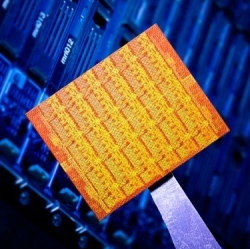
A team of researchers at MIT and the University of California at Berkeley has found a simple, inexpensive treatment that may help to unleash graphene’s potential. Currently, many suggested uses of graphene require treatments that can be expensive and difficult to apply predictably.
The new method is described in a paper published in the journal Nature Chemistry, co-authored by MIT doctoral students Priyank Kumar and Neelkanth Bardhan, MIT professors Jeffrey Grossman and Angela Belcher, and two others at Berkeley.
“We’ve been very interested in graphene, graphene oxide, and other two-dimensional materials for possible use in solar cells, thermoelectric devices, and water filtration, among a number of other applications,” says Grossman, the Carl Richard Soderberg Associate Professor of Power Engineering.
While pure graphene lacks some key properties needed for electronic devices, modifying it through the addition of oxygen atoms (to form graphene oxide) can provide those properties, Grossman explains. “Having oxygen atoms on graphene is so important for so many applications,” Kumar adds. (Oxygen converts graphene from a conductor of electrons into a semiconductor.)
But present methods leave oxygen atoms distributed unpredictably across the graphene’s surface, and involve treatment with harsh chemicals, or using annealing at temperatures of 700 to 900 degrees Celsius.
The group’s new approach involves exposing the material to relatively low temperatures, just 50 to 80 C, with no need for additional chemical treatment. “It’s a mild thermal approach,” Bardhan says, “versus other approaches that have been reported, thermal or chemical. This offers a relatively environmentally friendly method, with no harsh chemical treatment that generates harmful byproducts.” What’s more, he says, the treatment can easily be applied on a large scale, making commercial applications more feasible.
